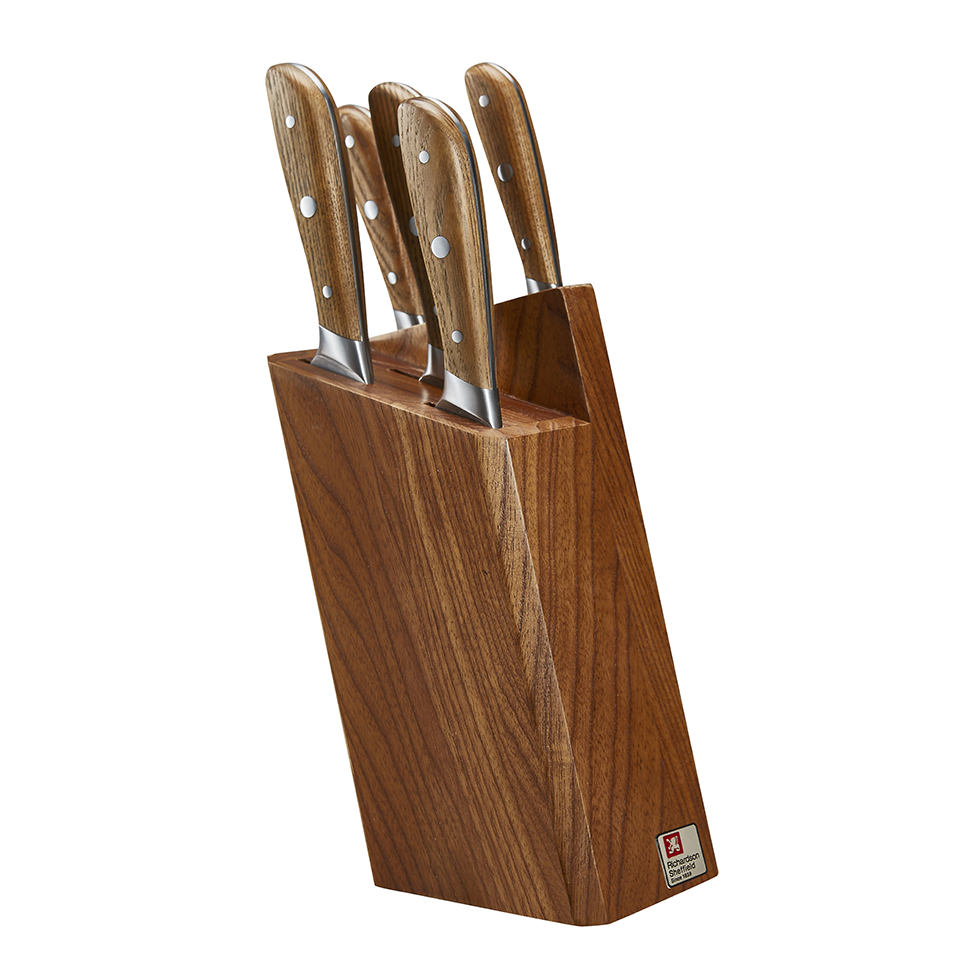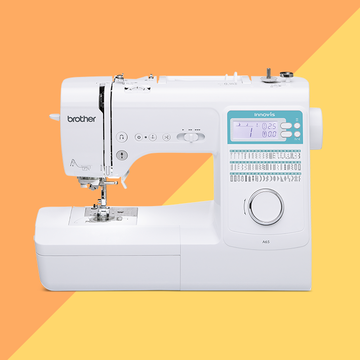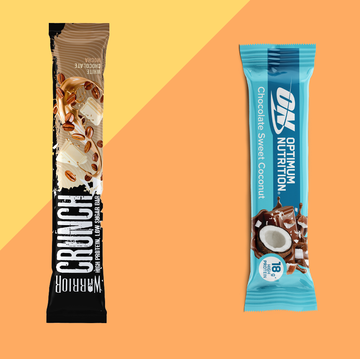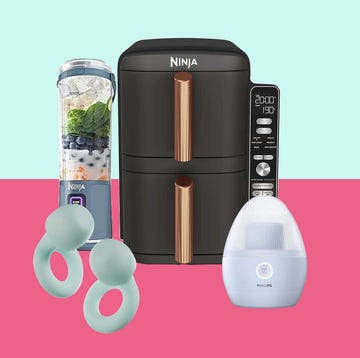We earn a commission for products purchased through some links in this article.
12 best kitchen knives for chopping and dicing in 2025, expert tested
These are the ones that made the cut, according our experts
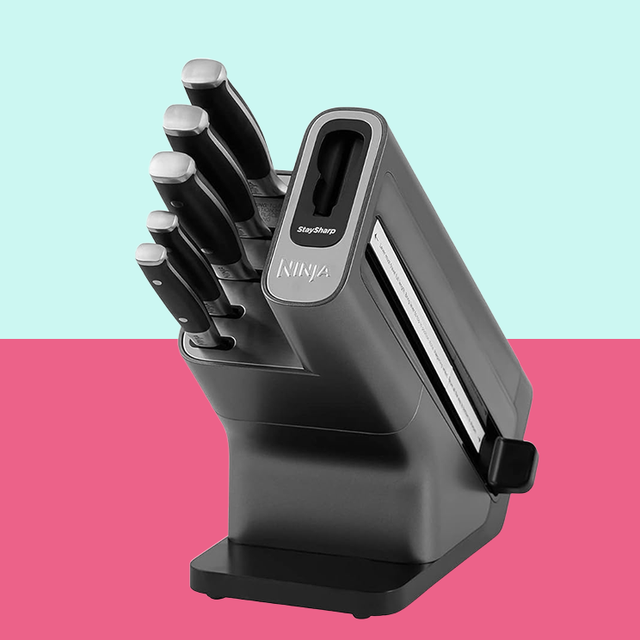
Whether it's carving up a Sunday roast or finely chopping an onion, we all know how much of a struggle cooking can be when your kitchen knives are simply not up to scratch.
But with the best kitchen knives, you can enjoy easy chopping, slicing and dicing for years to come. Many also have lifetime guarantees, making these sets an investment buy, so it’s worth spending time to find the best for your budget. That’s where the Good Housekeeping Institute can help.
The best knife sets to buy in 2025



Tefal Eversharp 5-Piece Knife Set + Block with Integrated Sharpener
Read review
Best Japanese steel knife set
HexClad The Essential 6 pc Japanese Damascus Steel Knife Set
Read review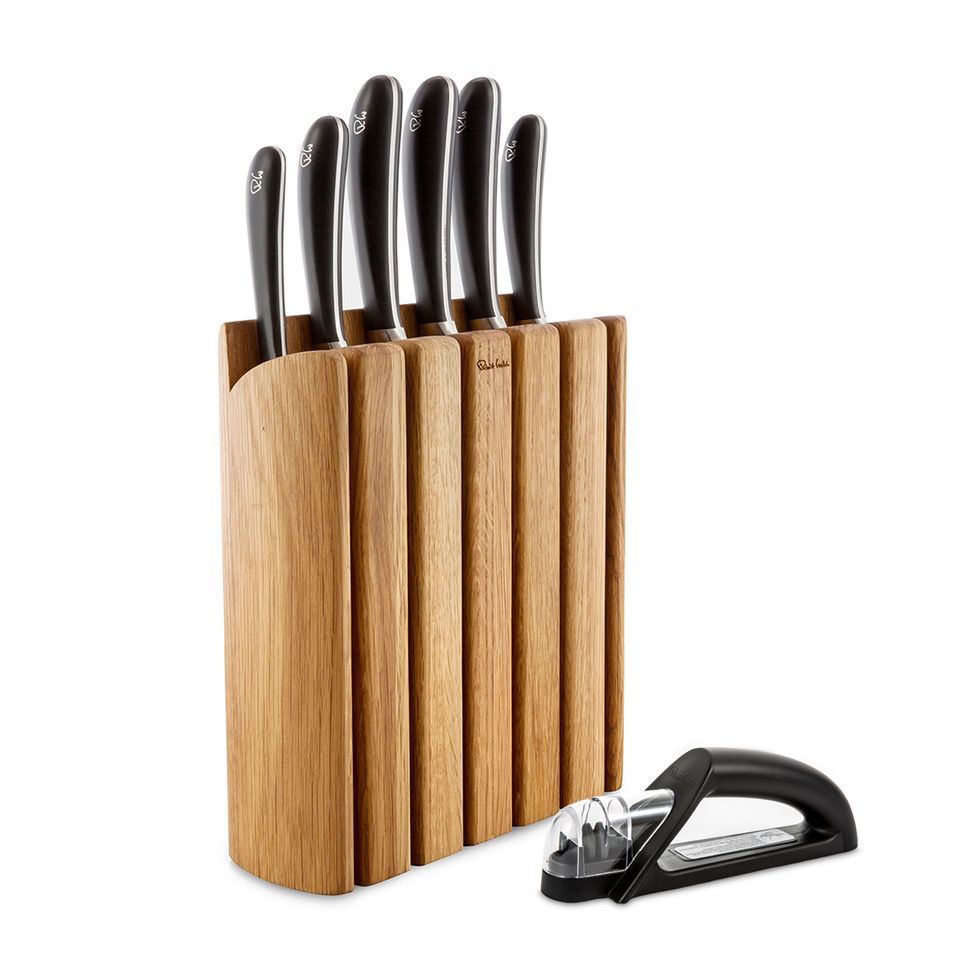

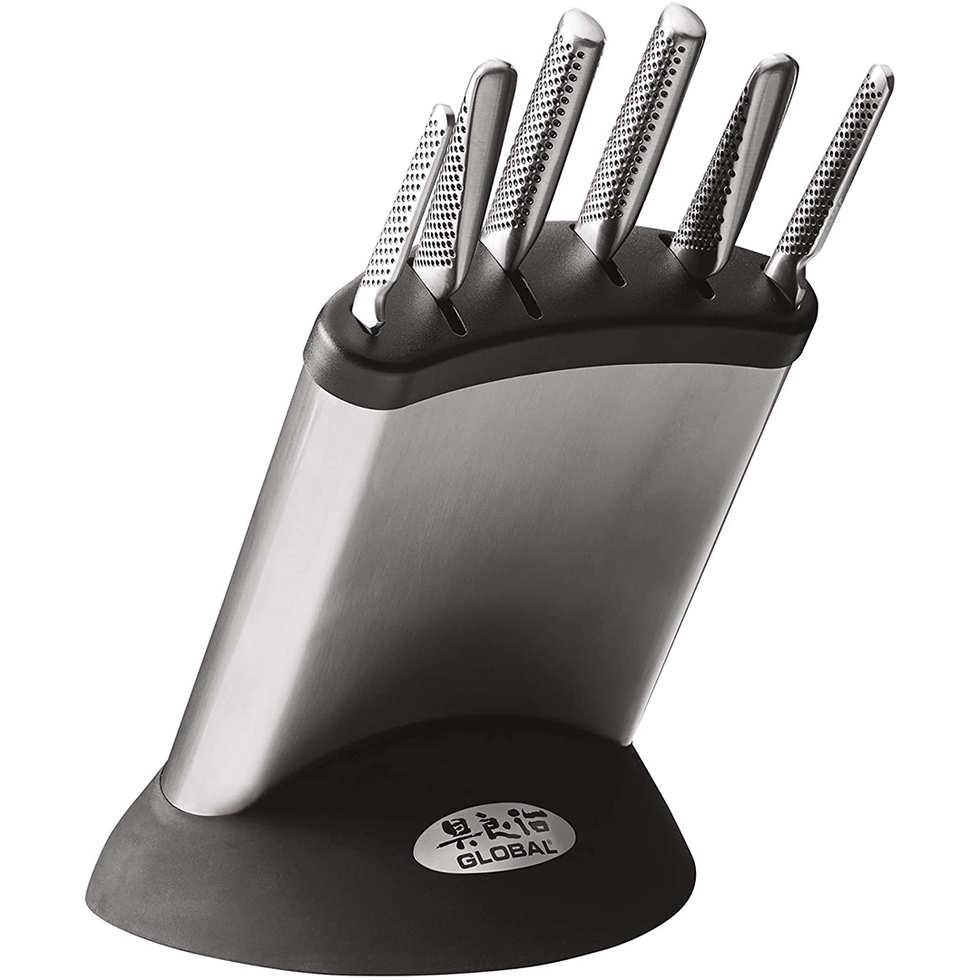
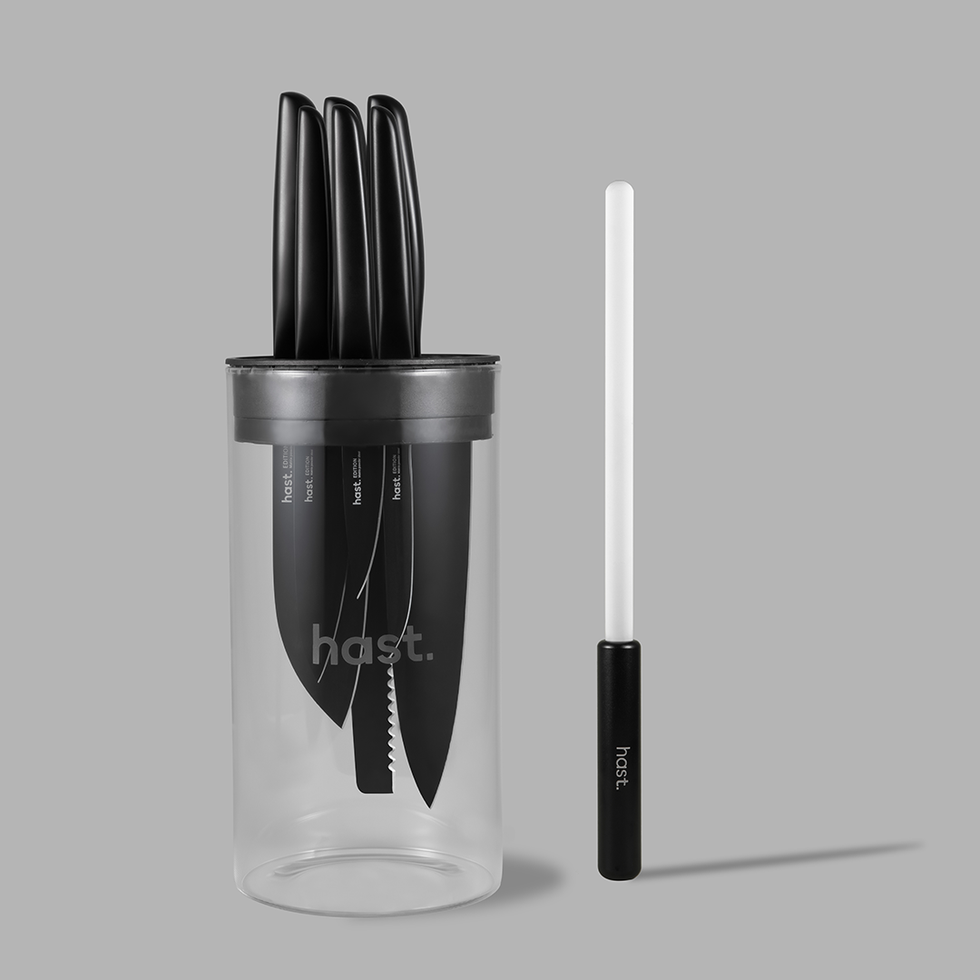

ProCook Damascus Elite Knife Set 5 Piece and Magnetic Glass Block
Read review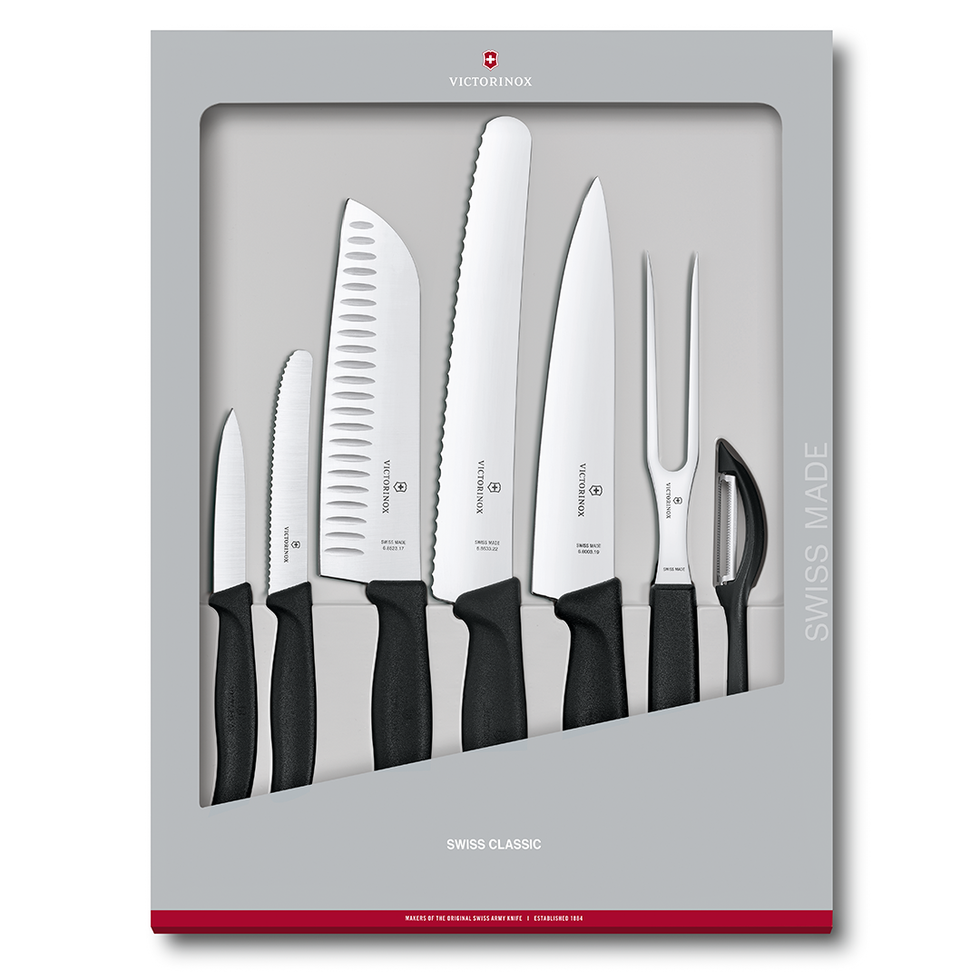
Our experts test knife sets by slicing and dicing a range of ingredients suited to each type of knife. We’re looking for the ones that glide smoothly, are easy to handle and cut with precision. You’ll find more information on how we test knives, along with what to consider before you shop, below our reviews.
You must be over 18 to buy kitchen knives
Pros
Ready to use straight out of the box with no extra sharpening needed
Detailed quick-start guide and care guide
Cons
Knife block is a little plasticky
Block is quite large and cumbersome
Score: 97/100
If anything can set you up for restaurant quality food at home, it’s this knife set. It sliced and diced everything from soft fruits to meat effortlessly and testers particularly loved the chef’s knife with its balanced handle and precise, uniform cutting. The bread knife was the weakest link, tearing our loaf's outer crust slightly, but even so, this was minimal.
The integrated sharpener is easy to use, and testers appreciated the non-slip feet on the bottom of the block (although it’s quite big). Instructions detail the intended uses for each knife, and they cleaned up well. It's a versatile set and the 10-year guarantee means these knives should be with you for many feasts to come.
Key specifications
| Knives in set | Chef, bread, slicing, paring, utility |
|---|---|
| Blade material | Stainless steel |
| Storage options | Block |
| Guarantee | 10 years |
Pros
Handles are a comfortable length
The back of the box gives recommendations on usage for each knife
Cons
The plexiglass block shows up watermarks easily
You'll need to refer to the Kuhn Rikon website for care and maintenance advice
Score: 96/100
With ice-hardened stainless-steel blades, our experts found this set noticeably sharp from the outset. They were difficult to fault in testing, dicing tomato effortlessly and carving cooked ham with precision. Even the bread knife maintained the same high standard, slicing neatly without dragging out dough or crushing softer loaves.
Minimal dirt traps made cleaning straightforward, and there were no signs of damage even after repeated washing. Our only real quibble was that the knives have a half tang (which means the blade extends halfway along the handle), instead of a full tang. In theory, this could make them more prone to snapping or the blade could loosen from the handle after many years of use.
That said, there’s no guarantee this would happen, particularly as this is a high-quality set. The transparent knife block is a thoughtful touch too, making it easy to select the correct tool for the job.
Key specifications
| Knives in set | Paring, utility, Chef’s, santoku, bread |
|---|---|
| Blade material | German stainless steel |
| Storage options | Plexiglass block |
| Guarantee | Unspecified |
Pros
Very well-balanced
Showed no signs of deterioration after washing
Cons
The handles are slightly slippery due to their smooth, satin-like finish
The santoku knife didn’t slide into the block as easily as the others
Score: 95/100
Just like our winner, this set has a block with an integrated sharpener, which is super convenient for keeping your knives in tip top condition. The utility knife was our favourite of the set, effortlessly gliding through mushrooms, lettuce and peppers, but the bread knife was a close second, again needing hardly any force to cut through a thick sandwich.
The santoku knife worked well on most vegetables, although it needed a little more pressure to thinly slice carrots, while the chef’s knife made light work of dicing an onion. And if any blade starts to lose its edge, the integrated sharpener is on hand – we found it significantly improved the sharpness of both the chef’s and santoku knife in the lab.
Key specifications
| Knives in set | Chef's, bread, paring, utility, santoku |
|---|---|
| Blade material | Stainless steel |
| Storage options | Plastic block |
| Guarantee | 10 years |
Pros
Full tang design
Each knife comes in its own protective sleeve and includes plastic tip protectors
Cons
Thick handles may be tricky to hold with small hands
No information on the recommended uses for each knife
Score: 94/100
This knife set has the ‘wow factor’ according to our expert testers – in terms of both style and performance. The knives were beautifully presented and didn’t need any sharpening before being put to work. Each knife sliced cleanly through fruit and veg, and meat didn’t pose a challenge either. The serrated knife worked like a charm on hard, crusty bread too.
Those with smaller hands may find the thick handles a little tricky to hold; however, minimal effort is needed to slice and chop with this set, so it shouldn’t cause too many issues. Our testers struggled a little to get the knives in and out of the presentation box and it doesn’t come with a storage block, but there are stands available to buy separately.
This knife set is an investment, but any skilled cook would appreciate its high-quality design and versatility. Plus, it comes with a lifetime warranty, so you know it’s made to last.
Key specifications
| Knives in set | Chef’s, serrated bread knife, santoku, utility, paring knife |
|---|---|
| Blade material | Japanese Damascus steel |
| Storage options | Block available to buy |
| Guarantee | Lifetime warranty |
Pros
Comfortable to hold
Blades come with protective sleeves held on by clips
Cons
No details on the use of each knife
Slight inconsistency in the sharpness of each knife
Score: 93/100
Knives can be stored in any of the slots on this versatile block, which allows you to slide them in and out from either the front or top. The slim design can be stored flush against the wall too, so it doesn't take up precious countertop space.
The good-looking, high-quality set showed no signs of wear after testing and cleaning. That said, our experts found that performance varied on an ingredient by ingredient basis – the carving knife sliced ham precisely but was met with resistance when taking on chicken, and the utility knife faltered with mushrooms but was efficient on lettuce. Most impressive? The santoku knife, which made light work of every task we used it for.
Key specifications
| Knives in set | Carving, bread, cook's, kitchen, santoku, paring |
|---|---|
| Blade material | Stainless steel |
| Storage options | Block |
| Guarantee | Lifetime warranty |
Pros
No dirt traps in the joint of the knives
The handles are a good length
Cons
The knives didn’t slide easily in and out of the block
The cabbage core required more pressure to cut through
Score: 92/100
This set is a good option for everyday cooks, with its utility knife scoring full marks. It cut through mushrooms, lettuce and peppers “like butter” according to our expert testers, who achieved thinly sliced results across the board.
The cook’s knife diced onion evenly, and the paring knife allowed us to deseed and cut chilli into strips with ease. More pressure was needed to slice through a vegan ‘ham’ joint, but the carving knife tackled roast chicken like a pro.
Each knife was well-balanced and comfortable to hold throughout testing and they all washed well in the dishwasher. We’d have liked some information on the best way to clean the knife block, as well as advice on sharpening, but this is still a reliable buy that offers good value for money.
Key specifications
| Knives in set | Carving, bread, cook's, paring, utility |
|---|---|
| Blade material | Stainless steel |
| Storage options | Block |
| Guarantee | Lifetime warranty |
Pros
Comes with individual plastic sleeves for each knife
Premium, sleek aesthetic
Cons
Lack of detail on the knife uses
Expensive
Score: 90/100
Our experts found this set a joy to use. Blades sliced with ease, requiring very little effort when prepping ingredients. With excellent weight distribution, the handles were also pleasant to hold, particularly on the utility knife and the vegetable chopping knife (which, incidentally, scored perfect marks on our cabbage, carrot and onion tests).
The block looks premium with no dirt traps, but we found it marked easily and was hard to clean. The set didn’t come with much in the way of instructions or safety information either. Overall though, it’s a great buy for experienced cooks.
Key specifications
| Knives in set | Peeling, utility, vegetable, flexible utility, cook's, bread |
|---|---|
| Blade material | Stainless steel |
| Storage options | Block |
| Guarantee | Lifetime warranty |
Pros
Good maintenance and care advice
Each knife was well-packaged in a protective covering on delivery
Cons
Only has a one-year warranty
Expensive
Score: 86/100
Undoubtedly a set for skilled cooks, you’ll have to ship this one from the States, but it’s worth it if you’re looking for a high-end addition to your kitchen. The attention to detail stood out with our testers – there’s a sharpening rod included, while a booklet accompanies each knife detailing its use and specifications.
They are easy to care for too – made with one continuous piece of steel, the blades and handles are effortless to clean while the knife block can be dismantled for ease of access. Some slight marks started to appear after our third wash, but they impressed across all our food preparation tests, with the bread knife scoring the highest of the set. A quality investment.
Key specifications
| Knives in set | Chef's, bread, utility, boning, paring |
|---|---|
| Blade material | Steel |
| Storage options | Cylinder block |
| Guarantee | 30 years |
Pros
Handles provided good grip
Knives come in well-labelled boxes that state the recommended use
Cons
No tang could cause issues with quality after long-term use
No safety information included
Score: 85/100
With its unique magnetic glass block, this knife set makes a real statement – just what you want when you’re leaving it out on the side for all to see. Of the five knives, the utility and carving options shone the most on test, scoring perfect marks for their ability to glide through mushrooms and separate roast chicken from the bone.
It was the chef’s knife that pulled the set down slightly. While it cut steak with ease, it struggled when it came to dicing onion and cutting through cabbage stalks – which isn’t ideal. Our experts found the octagonal handle shape uncomfortable towards the end of their meal prepping too.
Everything else about the set impressed though – the knives are a good weight, well-balanced and have no obvious dirt traps.
Key specifications
| Knives in set | Chef's, bread, utility, carving, paring |
|---|---|
| Blade material | Damascus stainless steel |
| Storage options | Magnetic glass block |
| Guarantee | 25 years |
Pros
Robust feel
Handles are logo-embellished, giving them a premium look
Cons
The handles felt too light
Lacking care instructions
Score: 83/100
There’s no block with this set, but don’t hold that against it; it has every knife you’d need covered, along with a peeler and carving fork too, both of which our testers found simple to use.
The best knife in the set was undoubtedly the santoku, which aced our carrot and cabbage tests and scored near-perfect marks when slicing onions. We found the set cleaned well too, looking new even after five washes, and the brand claims it’s also dishwasher-safe.
The weight distribution wasn’t the best – testers felt the blades were on the heavy side – but this comprehensive set should power through most jobs with ease.
Key specifications
| Knives in set | Carving, paring, bread, tomato, santoku, peeler |
|---|---|
| Blade material | Stainless steel |
| Storage options | Block and in-drawer holder available to buy |
| Guarantee | Lifetime warranty |
Pros
Compact set
Good value
Cons
No maintenance instructions
Wooden handles darkened after a few rounds of washing
Score: 82/100
Aspiring butchers will enjoy the chef’s knife here, which cut through a beef steak like butter. The paring knife was also a natural, scoring perfect marks for de-boning a chicken thigh, while the carving knife excelled with meat too. Plus, although the latter couldn’t quite slice ham thinly, it produced thicker cuts with aplomb, making the set a real all-rounder when it comes to prepping meat.
The natural ash wood block and knife handles will look attractive on display in most kitchens — just be careful, as we found some water marks appeared on the wooden handles after four washes. Given the selection of knives and their consistent, strong performance, however, it’s excellent value for money.
Key specifications
| Knives in set | All-purpose, bread, carving, chef's, paring |
|---|---|
| Blade material | Stainless steel |
| Storage options | Block |
| Guarantee | Not specified |
Joseph Joseph Elevate Slimblock 5-Piece Multicolour Knife Set


Pros
Compact sharpener built into the base
Great value
Cons
Block feels a little flimsy
Our knuckles hit the cutting board when using the larger knives
Score: 79/100
This knife set is thoughtfully designed for a better cooking experience. There’s a tool rest built in to each knife, so the blade doesn’t touch the work surface, and the handles have a good weight and length to them. Our experts also appreciated that the box indicated what each knife is intended for, making the set ideal for budding chefs.
While the santoku, paring and serrated knives performed well, the chef’s knife wasn’t as much of an all-rounder – testers had to apply extra pressure to achieve a clean cut through steak. The bread knife was similar, requiring more effort than we’d have liked to cut through the crust. The built-in sharpener will help keep your knives at their best, though.
Key specifications
| Knives in set | Chef's, bread, paring, serrated, santoku |
|---|---|
| Blade material | Japanese stainless steel |
| Storage options | Slimline block |
| Guarantee | Unspecified |

How we test knife sets
In the lab, our experts put the key knives in each set to work on an array of ingredients, using a variety of chopping skills. To test chef’s knives, they diced onions, sliced cabbages and cut steaks, while they used utility knives to chop mushrooms, shred lettuce and julienne peppers.
For santoku knives, our experts julienned carrots, sliced cabbage and diced onions, then used a paring knife to de-seed and cut chillies, peel, slice and dice a tomato, and bone and skin a chicken thigh.
Using bread knives, they sliced a crusty loaf, cut a mound of chunky sandwiches (filled with other ingredients we’d prepared during the test) and sliced a cake. Carving knives were put through their paces on a cooked joint of ham and a roast chicken.
Finally, any serrated knives were used to slice beef tomatoes, cube aubergines and cut lemons into wedges. After all that chopping, each knife set was hand-washed five times and checked for any damage.

Why trust the Good Housekeeping Institute?
We’ve been testing products at the Good Housekeeping Institute for over 100 years and have harnessed all that knowledge and experience when it comes to testing knife sets. Blossom Boothroyd, our homes testing manager, designed a set of protocols that hold each set to the same high standards. She’s spent years testing home and kitchen products and collaborated with our food experts to ensure each knife is tested just as you would use it in your kitchen.
All the feedback is then passed to our senior homes and lifestyle writer, Megan Geall, a keen home-cook and owner of our winning Ninja StaySharp set. She turns our experts’ opinions into easy-to-read reviews that include everything you need to know before you shop.

What should I consider when buying the best kitchen knives?
There’s a lot to think about when investing in a knife set, but comfort is key; every knife should act and feel like an extension to the user's hand.
Material: Knives are commonly made from the following four materials: stainless steel, carbon steel, Damascus steel or ceramic. Here's a breakdown of each
- Stainless steel: The most common type of knife, they are simple to sharpen and don’t rust easily. However, they're prone to flexing, bending and going blunt fairly quickly. This is because stainless steel is softer than other metals, such as carbon steel.
- Carbon steel: The traditional material used for making knives, carbon steel stays sharp for a long time. However, it's prone to rust (seasoning it with mineral oil will help prevent this) and requires more care and maintenance than its stainless steel counterpart. But if you're serious about cooking and not working within a budget, carbon steel is the way to go.
- Damascus steel: Damascus steel knives have a carbon steel core and a stainless steel exterior. They're distinguished by their striking designs along the blades, but can be expensive – they’re usually handmade, so expect to pay between £70 and £500. Some stainless steel knives are coated to look like Damascus steel, so beware.
- Ceramic: These lightweight, extremely sharp knives aren’t too expensive. They don’t rust and rarely need to be sharpened, but they can chip easily. They're difficult to maintain at home, as hard ceramic requires a diamond sharpener, meaning you usually have to send them back to the supplier to sharpen.
Weight, comfort and balance: Look for a knife with a little weight behind it that doesn’t strain your wrists. A knife’s weight should be equally balanced between the handle and blade – if the handle is too heavy, it won’t cut as effectively and if the blade is too heavy, it will be uncomfortable to use.
Tang: The tang refers to the unsharpened, unexposed part of the blade that extends down the handle. There are three main tang types:
- Full tang: The blade is one solid piece of metal that runs down the full length of the handle. On some knives, the tang is visible and fastened by rivets. A full tang knife is always the best choice, as it usually has better balance and a more robust design. It also means there's no danger of the handle coming loose from the knife blade.
- Rat tail tang: The blade narrows as it goes through the handle and is commonly welded at its base. Knives with a rat tail tang can come loose over time, making the handle wobbly.
- Half tang: The blade extends half way along the handle. If too much force is applied, a half tang knife can snap, as only glue is binding the knife and handle.
Handle types: Plastic handles tend to be smooth, free from grooves that can trap dirt, and are sometimes slightly textured to offer a more secure grip. Keep them well away from heat sources when cooking to avoid melting the handle.
Wooden handles will need oiling with a dedicated knife handle oil. Most modern wooden-handled knives have a light clear plastic coating to protect them. When washing, avoid prolonged soaking.
Most knives are suitable for right- or left-handed users, as the double bevel makes both sides angular and sharp. But some knives – bread knives, in particular – usually have a single bevel. This means the blade is only sharp down the right-hand side.
What are the different types of kitchen knives?
There are hundreds of different knives on the market, each with their own culinary task, but here are the main knives to consider.
- Chef’s knife: This is a multi-purpose knife well-suited to most tasks. A chef’s knife will be thicker towards the heel, making it perfect for hard root vegetables, potatoes and meats.
- Santoku knife: The Santoku knife originated in Japan and is a general purpose knife. It has a thinner blade than a chef’s knife and is most effective when dicing, chopping and mincing.
- Paring knife: This small and nimble knife is ideal for fiddly tasks such as peeling, coring and finely slicing.
- Serrated paring knife: These knives look similar to a paring knife but they have a serrated edge. They’re great for cutting tomatoes and citrus fruits.
- Utility knife: A smaller version of a chef’s knife, it's best used when a chef’s knife is too big for the task at hand. Ideal for carving chicken breast or slicing small vegetables.
- Carving knife: Best for slicing joints of meat and poultry. Use the wrong knife and you risk shredding, tearing and hacking at the meat, rather than cutting it cleanly.
- Bread knife: Designed with a sharp serrated edge to easily cut through crusts and rusks. They’re also great for cutting fruits with fibrous skins, such as pineapples.
- Peeling knife: Similar in appearance to a paring knife but the blade curves inwards. This makes removing tough skins from fruit and vegetables much simpler.
How to care for your knives
The best sets come with a lifetime warranty and if you care for your kitchen knives, you’ll find they’ll keep chopping, dicing and slicing for decades to come. It’s important to clean and sharpen them properly, as well as storing them safely and securely.
Cleaning: According to Good Housekeeping’s Household Advice Editor, Katie Mortram, cleaning your knife set correctly is one of the best ways of keeping it in good nick. While some brands claim their knives are dishwasher safe, she recommends handwashing. “Never put kitchen knives in the dishwasher, even if they say dishwasher-safe,” says Mortram. “The abrasiveness of the detergent can degrade the blade, and the prolonged exposure to moisture and humidity can encourage rust. If the handle is made from wood, this can split and crack as well.”
Best practice is to wash your knives in hot, soapy water and then dry them with a tea towel, rather than leaving them to air dry. However, we do also test any dishwasher-safe claims as part of our testing.
Sharpening knives: A sharp knife is a safe knife. Ones that are blunt or unsharpened require more force to cut, which increases the likelihood of slipping and causing injury. You can choose between a manual knife sharpener, electric sharpener, sharpening stone or whetstone, or honing steel. For the average home cook, a manual or electric sharpener may be best as they’re cheaper and easier to get to grips with.
GHI tip: Don’t use the blade side to scrape ingredients off a chopping board into a pan. Instead, turn your knife upside down and push them with the back (spine) of the knife across the board to avoid blunting it. Or use a scraper to transfer your ingredients from chopping board to a pan.
How to store your knives
Storing knives in the cutlery drawer unprotected is dangerous and can seriously damage them, too. Here are the most effective ways to store your knives.
Knife blocks: Many sets come with a knife block, or you can buy universal knife blocks. They're a great option for those short on space but can be difficult to clean. You also risk dulling the blade as you pull the knife out, but luckily, some blocks have horizontal slots, so the knives don’t sit on their blades, and others have sharpeners built-in to the outside.
Magnetic strips: These are long, horizontal, magnetic strips that attach to the wall above your countertop. They securely hold your knives to the wall and won't blunt them.
Sheaths: The cheapest storage option, some sets include sheaths for all knives. This means they can be safely stored in the cutlery drawer.
How to buy knives online
The main issue with buying knives online goes back to the premise that it's important to try them out before buying, as our hands are all different in size and shape.
When buying knives online, you’ll also need proof that you're 18 or over. Here are the terms and conditions from the biggest retailers.
Amazon: An online age verification check is required when buying knives from Amazon. Customers may also be ID’d at the point of delivery. You’ll need to be able to show some form of up-to-date photo ID. Knives, as with other age-restricted items, cannot be delivered to a neighbour, Amazon locker, pick-up point or safe place.
Lakeland: You can order knives online from Lakeland, but they must be collected in store or purchased using the FedEx age check service so that they can verify your age.
Zwilling: To ensure the customer is over 18, Zwilling runs age verification checks based on information input at checkout. This all happens in real time and won’t take too long. Their courier may also ask to see ID upon delivery.

The verdict: The best knife sets to buy in 2025
Our all-round winner is Ninja’s StaySharp Knife Block thanks to its impressive performance and handy integrated knife block. The sleek, black finish might not be for everyone though, so for something with a more traditional look, opt for the Robert Welch Knife Block Set with wooden block, which comes with a lifetimes warranty.
For those looking for a knife set that offers great value for money, the Richardson Sheffield Scandi Knife Block and Joseph Joseph Elevate Slimblock Set both come in under £100 and scored well in the lab.
Megan is the Good Housekeeping Institute’s senior homes and lifestyle writer. She loves diving into the latest product releases to find the very best buys on the market and has written hundreds of product reviews on everything from the best vacuum cleaners and coffee machines to the best ice cream makers and robot window cleaners.
When she’s not writing about the newest gadgets and gizmos for your home and garden, you’ll find her running every distance from 5km to 100km or relaxing at home with her cat – there really is no in between.
Megan has an MA in Magazine Journalism and has previously written for Stylist, Glamour, Women's Health, TimeOut, SquareMeal, and YOU magazine. You can find Megan on Instagram @meganlouisegeall.
Blossom is passionate about finding the best home products and appliances for GH readers. As head of the homes testing team, she has led reviews across multiple categories, from pizza ovens, and smart plugs to portable fans and hobs. She enjoys delving into the intricacies of products and refining testing protocols to ensure we’re testing them against their claims. Her aim is to find the top-performing products on the market, to help take the hard work out of housework. Blossom’s most notable accomplishment in the lab has been toasting 528 slices of bread in her quest to find the best toasters money can buy. In her free time, she openly admits to being a music geek and indulges her creative side through crocheting, baking, singing and writing.

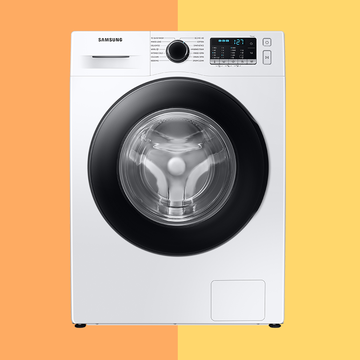
14 best washing machines, tried and tested
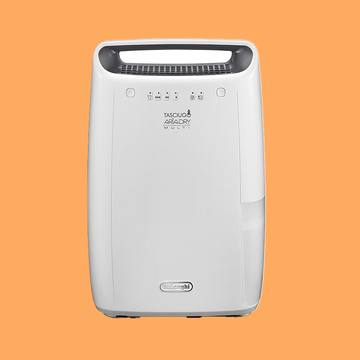
16 best dehumidifiers, tried and tested

14 best hard floor cleaners for fresh floors

18 best electric heaters to keep you warm
